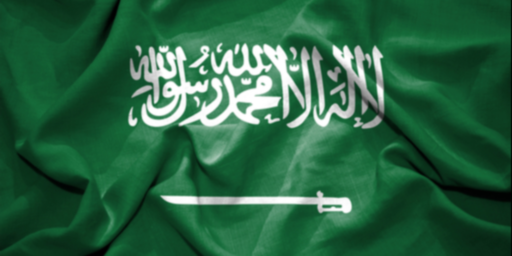Iraq Deadliest War for Journalists
The death of two CBS crew members on Sunday brings the total number of journalists killed in Iraq to 71, making it the deadliest war for journalists on record.
By some reckonings, the death of two journalists working for CBS News on Monday firmly secured the Iraq war as the deadliest conflict for reporters in modern times. Since the start of the war in 2003, 71 journalists have been killed in Iraq, a figure that does not even include the more than two dozen members of news media support staff who have also died, according to the Committee to Protect Journalists. That number is more than the 63 killed in Vietnam, the 17 killed in Korea, and even the 69 killed in World War II, according to Freedom Forum, a nonpartisan free speech advocacy group
“It is absolutely striking,” said Ann Cooper, the executive director of the Committee to Protect Journalists. While cautioning that the recorded number of journalists killed in past conflicts may be inexact, she said: “We talk to veteran war correspondents who have covered everything going back to Vietnam and through Bosnia. Even those who have seen a number of different wars say they have never seen something like this conflict.”
In the latest incident, a veteran cameraman, , 48, and a soundman, James Brolan, 42, were killed, and a correspondent, Kimberly Dozier, 39, was seriously wounded when the United States Army unit in which they were embedded was attacked. All three had extensive backgrounds covering wars and each had volunteered to work in Iraq.
[…]
CBS, like other major news organizations, has been struggling to cover the war while providing security for its employees, including their Iraqi employees, who often go places Westerners cannot.
Still, it is Iraqi journalists who have been most at risk. Just this month, three Iraqi reporters were killed in a two-week period, according to Reporters Without Borders. In addition to those killed, at least 42 journalists have been kidnapped, according to the group.
Even the seeming security of being with the American military carries substantial risk, as it did in January, when the ABC anchorman Bob Woodruff and Doug Vogt, a cameraman, suffered severe injuries in a roadside bombing in Iraq. The death of the CBS journalists was the first time since 2003 that reporters embedded with the American military had died as a direct result of hostile fire. The CBS crew, by all accounts, was wearing the standard protective gear.
Whether this is truly the deadliest war for journalists so far is partly a matter of how one counts. Are only reporters “journalists,” or or are soundmen and cameramen part of their ranks? If one counts support personnel–and it’s reasonable enough to do so in this context, since they’re taking the same risks–then the number of people exposed has certainly increased. Further, the number of media outlets covering this war may well be larger than in past endeavors.
The fact that the lion’s share of the reporters killed in this war are Iraqis specifically targetted by the guerrillas precisely because they are Iraqi is a unique aspect of this war. We’re facing an enemy that considers journalists legitimate targets, something that has not been the case in past conflicts.
More importantly, though, this war is simply different from most wars of the past in that there is truly no front line anymore. One is almost equally likely to be killed well into the rear area as out on patrol seeking to engage the enemy. In past wars, even as recently as the first Gulf War, most reporters were able to camp out at headquarters or in cushy hotels away from the fighting, and still do their job. In a war where the enemy deliberately targets civilians, there is no safety zone.




Shouldn’t be too much a shock, since this is also the singular instance where the press had this level of access to the front.
This is perhaps their first exposure to what the troops they’re so antagonistic toward, are exposed to daily.
Bithead– you have no idea what you are talking about.
In Vietnam, for example the press was free to go wherever it wanted and they were regularly in the front lines and battle fronts throughout the theater.
In WW II the press roamed throughout the back lines right up to the front in Europe and landed in the Pacific shortly after the first troops hit the beach. Moreover, in both Europe and the pacific they regularly flew with bomber missions.
True. But the troop to newsperson ratios were substantially lower in those first two instances.
Bad wording on my part… when I said the press didn’t have the level of access, I wasn’t speaking of the press as individuals, having greater per person access, but rather, as a group. IE: More press people in the field = more access for the press as a whole. Of course, that means a greater exposure for them to danger, too.
Attacking journalists is part of the enemy’s information war strategy.
By intimidating journalists, the media reports on terrorists deferentially. And since western media do not fear US troops in the least, the media feels free to Abu Ghraib them.
I hope the media wises up to the fact the terrorists and Islamofascists want to kill and subjugate everyone who thinks differently. Maybe then, their coverage might become a bit more balanced.
Nah. Never happen.
One can always hope, but the situation you describe is most certainly not what’s come about thusfar.
All that has come of their exposure to the facts is that their denials of those facts have become stronger.
The advent of life TV coverage has certainly upped the number of journalists exposed to danger. Where a print or radio journalist would be on his/her own in the past, it now takes a minimum of three (and usually four) to put together a TV segment:
The on-air talent, the producer (who also handles the up-link), the cameraman, and the sound person. (Sometimes the camera or producer also handles the sound.)
I’d worked with both Douglas and Brolin in the ME before and they were both good guys, easy to deal with. Dozier I knew only from phone conversations.
Spencer—the press was free to go wherever it wanted in Vietnam? LOL what world are you living on?
So the reporters are just wandering around and decide “Hey, I think I will go follow those soldiers right there, I wonder where they are going. Hi guys! Oh you will be in a firefight? Great! I will tag along!”
LOL!